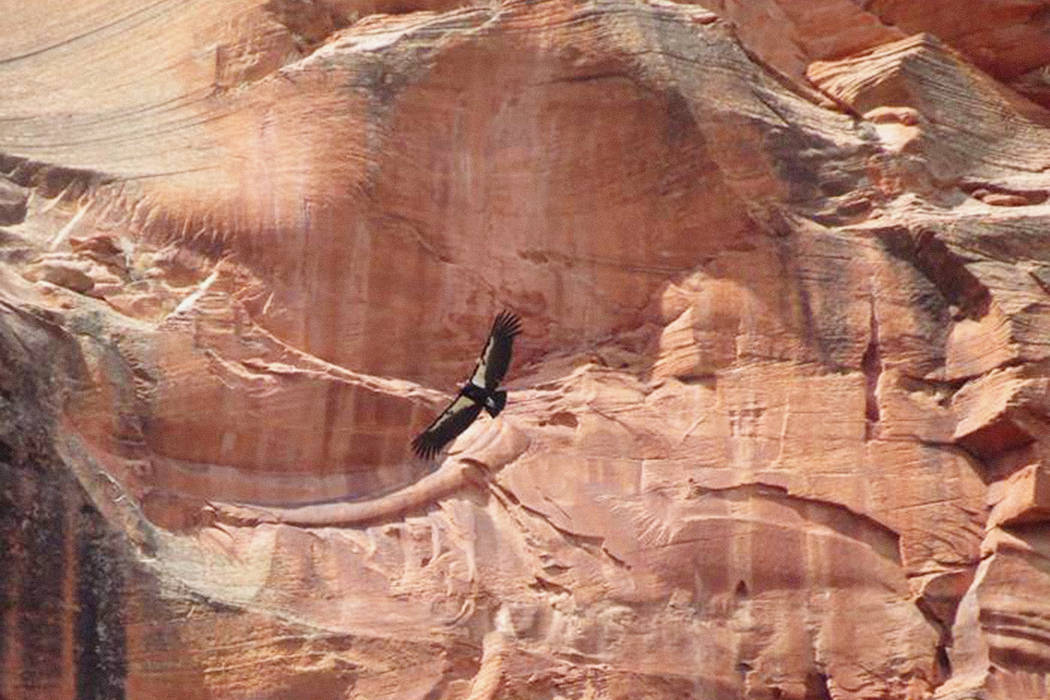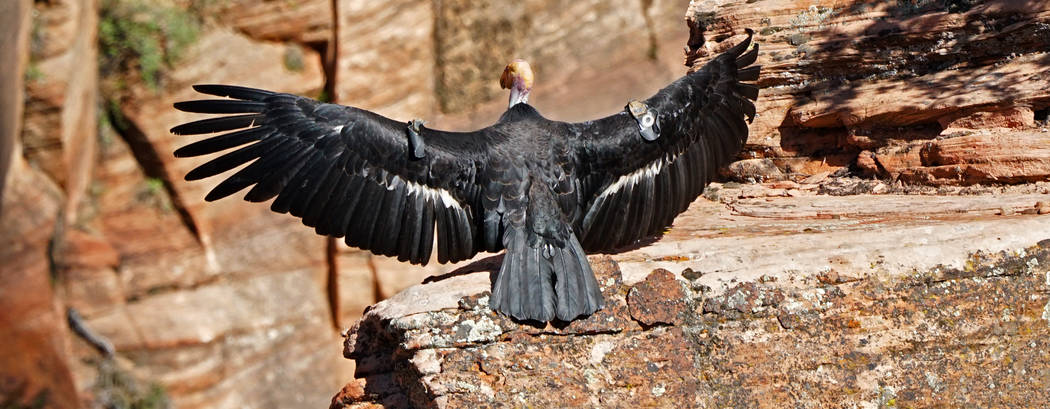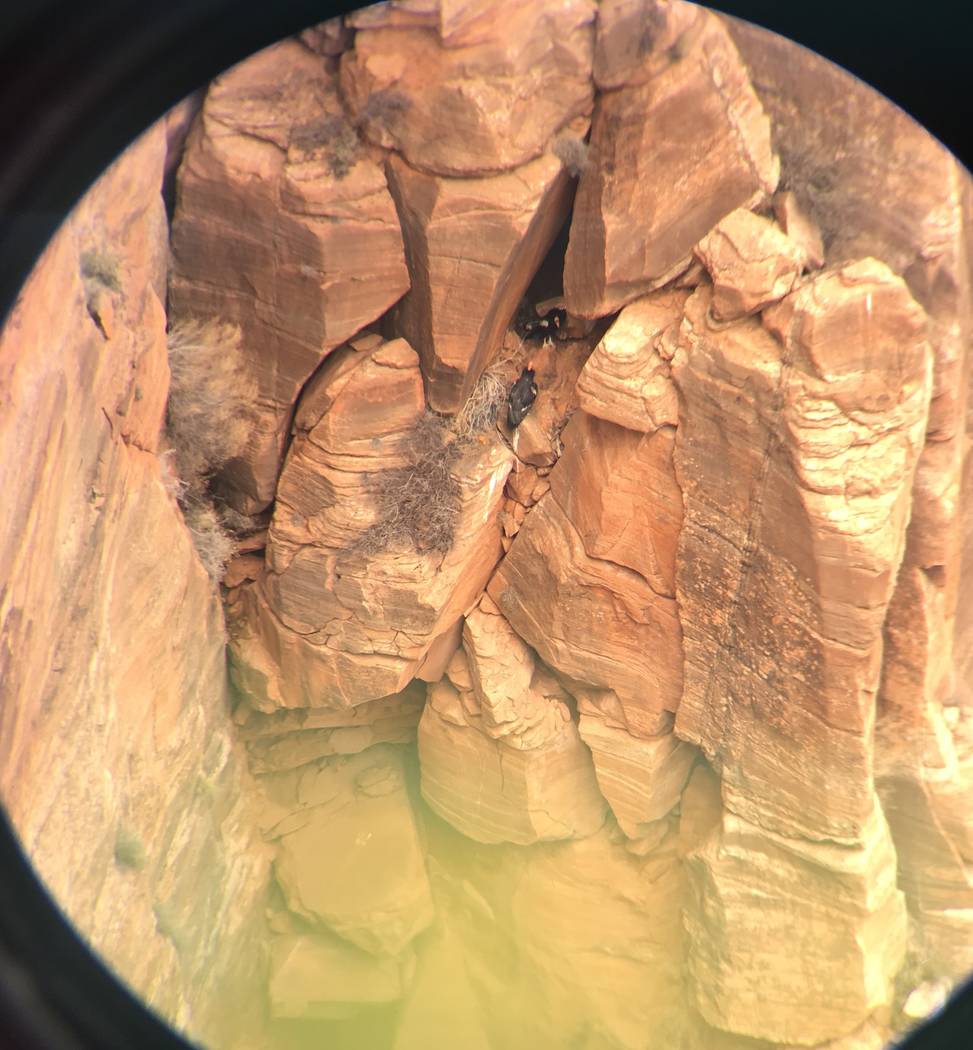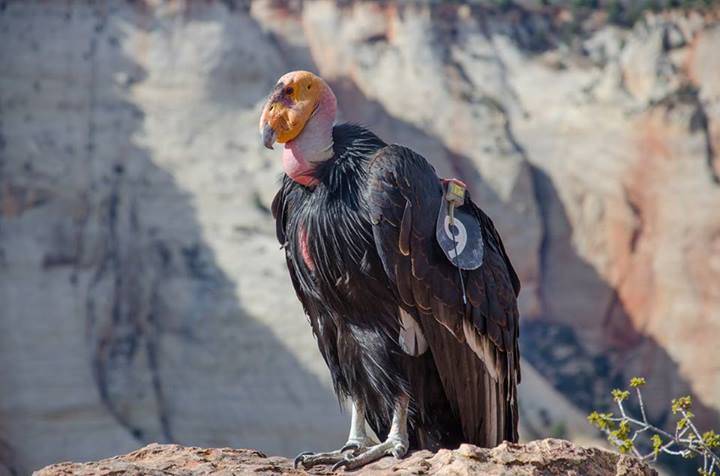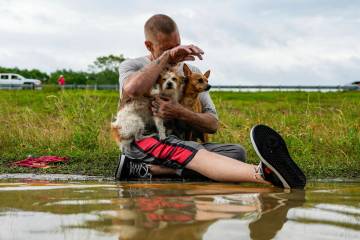1,000th California condor of recovery effort hatches in Zion park
Biologists at Zion National Park have recorded the 1,000th California condor chick to hatch since efforts began in earnest to bring the endangered bird back from the edge of extinction.
In 1982, there were only 22 living California condors on Earth. The last remaining wild condors were rounded up for a captive breeding program that led to a resurgence in the population starting in 1992.
Today there are more than 500 California condors, with half of those living in the wild across Arizona, Utah, California, and Mexico’s Baja Peninsula.
The chick’s discovery is a “milestone that captures the essence of the population’s progress toward recovery,” the park said in a release.
According to the park, biologists discovered the Zion chick in a nest on cliffs just north of Angels Landing, and estimate the egg was laid in March and hatched in May.
The chick’s mother, condor 409, and father, condor 523, have been together for two years. It’s 409’s third confirmed chick, and if it manages to survive its first attempt at flight, expected in November, it will be the first of her chicks to fledge sucessfully. Her first two chicks did not.
Eugenne Moisa, public information officer for Zion, said 409 has lived in the park for about a decade. Both birds were released near Vermilion Cliffs National Monument in Arizona in the 90s.
“It’s a big announcement for us in the hope that things line up and the chick is able to fledge,” he said.
Condors are rarely seen in Zion, and usually just pass through on their way somewhere else.
“When there’s a sighting, our biologists try to get some eyes on them,” Moisa said.
If the chick survives, it will spend about a year with its parents before striking out on its own.
The condor recovery program is a joint effort between government entities like the National Park Service, the U.S. Fish and Wildlife Service, the Arizona and Utah state wildlife agencies and nonprofits like the Peregrine Fund, a conservation group for birds of prey.
According to the Peregrine Fund, lead poisoning is the greatest threat to condors in the wild. Lead bullets fragment into microscopic pieces when they strike animals, and can make scavengers like the condors sick if they ingest them.
Efforts from hunters and conservationists, like using solid copper bullets that don’t fragment on impact, have reduced the amount of lead in the condors’ habitat.
“After over two decades of efforts to restore condors to the southwest, it is nice to take a moment to reflect on the steady and slow progress made and thank those who have contributed so much, like Zion National Park, to see this effort through,” Chris Parish, director of conservation for The Peregrine Fund, said in a release. “We have a long way to go, but today we celebrate this milestone.”
Contact Max Michor at mmichor@reviewjournal.com or 702-383-0365. Follow @MaxMichor on Twitter.



